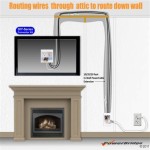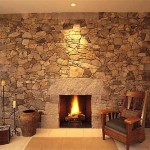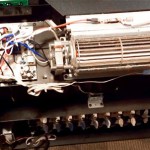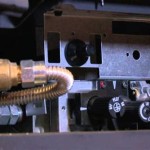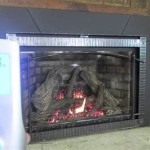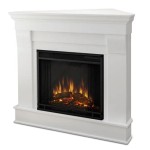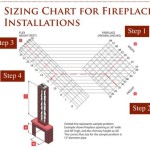```html
Adding a Wood Burning Fireplace to Your Basement: A Comprehensive Guide
A wood-burning fireplace can transform a basement from a cold, underutilized space into a warm and inviting haven. The crackling fire, the radiant heat, and the ambiance it creates offer a unique appeal that is hard to replicate with other heating options. However, installing a wood-burning fireplace in a basement involves careful planning, adherence to safety regulations, and a thorough understanding of the necessary infrastructure. This article provides a comprehensive guide to help navigate the process, ensuring a safe and successful fireplace installation.
Adding a wood-burning fireplace to a basement poses specific challenges compared to installing one on the main floor. Basements often lack existing chimneys, and ventilation can be more complicated due to their below-grade location. Furthermore, building codes and safety standards are stringent regarding wood-burning appliances, particularly in enclosed spaces. Therefore, a methodical approach is crucial to ensure compliance and optimal performance.
Key Point 1: Planning and Preparation: Assessing the Suitability of Your Basement
Before embarking on the installation, a thorough assessment of the basement is essential. This involves evaluating several factors, including the structural integrity of the space, the availability of adequate ventilation, and compliance with local building codes. Neglecting these preliminary steps can lead to costly mistakes and potential safety hazards.
First, examine the structural integrity of the basement floor. A wood-burning fireplace, especially a masonry fireplace, is substantial in weight. The floor needs to be able to support the added load without compromising its structural stability. A professional structural engineer may need to assess the floor’s capacity and recommend reinforcement if necessary. This assessment is particularly critical for older homes or basements with known structural issues.
Second, consider the existing ventilation system in the basement. Wood-burning fireplaces require a dedicated chimney for proper exhaust. If no chimney is present, a new one must be installed. This can involve extending an existing chimney, constructing a completely new chimney, or opting for a prefabricated metal chimney. The choice depends on factors such as the fireplace design, budget, and local building codes. Ensure that the chimney extends above the roofline according to the required height specified in the building code to ensure proper draft and prevent smoke from entering the house.
Third, thoroughly research and understand the local building codes and permit requirements for wood-burning fireplace installations. These codes vary depending on the municipality and typically address issues such as clearances to combustible materials, chimney height, and the type of fireplace and chimney that can be installed. Obtaining the necessary permits is crucial to avoid fines and ensure the installation meets all safety standards. Working with a qualified contractor who is familiar with local codes can streamline this process.
Finally, consider the overall layout of the basement. The fireplace should be located in a place that maximizes its aesthetic appeal and heat output without obstructing pathways or creating fire hazards. Maintain adequate clearances from furniture, curtains, and other combustible materials. Plan for a designated area for storing firewood, ensuring it is kept away from the fireplace to minimize the risk of fire.
Key Point 2: Choosing the Right Fireplace and Chimney System
Selecting the appropriate fireplace and chimney system is critical for both performance and safety. Various types of fireplaces are available, each with its own advantages and disadvantages. Similarly, chimney systems differ in terms of materials, construction, and suitability for different fireplace types.
Consider the different types of fireplaces available. Masonry fireplaces, built from brick or stone, offer a traditional aesthetic and excellent heat retention. However, they are heavy, require a substantial foundation, and are more expensive to install. Prefabricated metal fireplaces, also known as factory-built fireplaces, are lighter, more affordable, and easier to install. They come in a variety of styles and sizes and are typically designed to be used with specific chimney systems. Fireplace inserts are designed to be installed within an existing fireplace opening. While typically gas or electric, some wood burning inserts are available and may be an option if an existing masonry fireplace exists in the basement that is no longer functional. It is crucial to select a fireplace that is certified by a recognized testing agency, such as UL or CSA, to ensure it meets safety standards.
The chimney system is equally important. A masonry chimney is constructed from brick, stone, or concrete blocks and is typically used with masonry fireplaces. It requires a solid foundation and skilled craftsmanship. Prefabricated metal chimneys are made from stainless steel or other corrosion-resistant materials and are designed to be used with prefabricated fireplaces. They are lighter, easier to install, and often less expensive than masonry chimneys. The chimney should be properly sized to match the fireplace’s flue outlet to ensure proper draft and prevent creosote buildup. Creosote is a flammable substance that accumulates in chimneys and can cause chimney fires.
When selecting a chimney, consider its insulation properties. Insulated chimneys help to maintain a consistent flue temperature, which improves draft and reduces creosote formation. Choose a chimney that is listed and labeled by a recognized testing agency to ensure it meets safety standards. Furthermore, ensure that the chimney is installed according to the manufacturer’s instructions and in compliance with local building codes.
An alternative to traditional chimney systems is a direct vent system. This option often works with wood-burning stoves rather than open fireplaces. Direct vent systems draw combustion air from outside the home and vent exhaust gases directly outside through a sealed pipe. This eliminates the need for a traditional chimney and can simplify the installation process. However, direct vent systems may not be suitable for all fireplaces and may require specialized installation techniques.
Key Point 3: Installation and Safety Considerations
The installation process is a critical step that requires careful attention to detail and adherence to safety guidelines. Proper installation ensures the fireplace operates efficiently, safely, and in compliance with building codes. It is strongly recommended to hire a qualified and licensed contractor to perform the installation. A professional contractor has the experience, knowledge, and tools necessary to complete the job safely and effectively.
Begin by preparing the area for the fireplace. This may involve clearing the space, leveling the floor, and constructing a foundation if necessary. Ensure that the fireplace is placed on a non-combustible surface, such as concrete or tile, and that adequate clearances are maintained from combustible materials. Follow the fireplace manufacturer’s instructions for setting clearances.
Install the chimney system according to the manufacturer’s instructions and local building codes. This typically involves assembling the chimney sections, connecting them to the fireplace, and securing them to the structure. Ensure that the chimney is properly sealed to prevent leaks and that it extends above the roofline according to the required height. Use proper flashing around the chimney where it penetrates the roof to prevent water from entering the building.
Connect the fireplace to the chimney using the appropriate flue connector. The flue connector should be made of durable, non-combustible material and should be properly sized to match the fireplace and chimney. Ensure that the flue connector is securely attached and that there are no gaps or leaks.
Once the fireplace and chimney are installed, conduct a thorough inspection to ensure everything is properly connected and that there are no potential safety hazards. Check for leaks, gaps, and obstructions in the chimney. Ensure that all clearances are maintained and that the fireplace is properly grounded. Before using the fireplace for the first time, have it inspected by a qualified chimney sweep. The sweep will inspect the fireplace and chimney for any potential problems and provide recommendations for safe operation.
Safety should always be the top priority when operating a wood-burning fireplace. Install smoke detectors and carbon monoxide detectors in the basement and on every level of the house. Regularly clean the chimney to remove creosote buildup. Have the chimney inspected annually by a qualified chimney sweep. Store firewood safely away from the fireplace and other combustible materials. Never leave a fire unattended and always extinguish it completely before leaving the house or going to bed. Teach all family members about fire safety and how to operate the fireplace safely.
In addition to the installation aspects, consider the aesthetic integration of the fireplace into the basement's overall design. Surrounding the fireplace with decorative materials such as stone, brick, or tile can enhance its visual appeal. Building a custom mantel can provide a focal point and a place to display decorative items. Consider adding lighting to highlight the fireplace and create a warm and inviting atmosphere.
Finally, be aware of the environmental impact of burning wood. Wood smoke contains particulate matter and other pollutants that can harm air quality. Burn only dry, seasoned wood to minimize smoke emissions. Avoid burning treated or painted wood, as these materials can release toxic chemicals into the air. Consider using a wood-burning appliance that is certified by the EPA to meet emission standards. Following these guidelines can help to minimize the environmental impact of burning wood.
```
How To Install A Wood Stove In The Basement 2024 Forestry Reviews

How To Install A Wood Stove In The Basement 2024 Forestry Reviews

Fireplace Insert Guide Fireplaces Direct Learning Center

How To Install A Wood Stove In The Basement 2024 Forestry Reviews

Moving Hot Air How To Heat Your House Using Fireplace

Moving Hot Air How To Heat Your House Using Fireplace

Diy Fireplace Installation Framing And Final Connections

Basement Heating Options

Basement Fireplace Ideas And Inspiration Hunker

Wood Stove Install Pipe And First Fire
Related Posts

